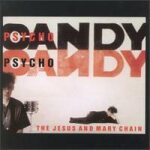Vivian Girls : Vivian Girls

It is commonplace to say that a song reminds you of another song, another group, another album. Less frequent is discussion of the way that music makes us remember. It brings to my mind the way in which many who are learning English as a second (third, fourth, etc…) language tend to say, “That remembers me of…” rather than, as is natural to the native speaker, “That reminds me of.” They are generally just translating directly from another language, but the distinction highlighted by this mistake is one pregnant with implications. In his essay, “Maps, Movies, Musics and Memory,” Iain Chambers writes that, “Music serves as a multi-dimensional map; it is simultaneously connected to fashion (repetition of the new) and to memory (moments lost in time).” He goes on to link this observation up with larger cultural concerns. Here, I am focusing a specific instance of the multi-dimensionality of music.
Vivian Girls are a Brooklyn band comprising Cassie Ramone, Kickball Katy, and Ali Koehler. Their first full-length (which was initially released last spring through Mauled by Tigers) has been reissued by Los Angeles label In the Red. Over half of its ten songs clock in at just under two minutes and as a whole it lasts less than 22. As such brevity suggests, the album delivers through immediacy. But what it delivers is more complex than one might assume. It very pointedly brings to the fore the question of influence and how inspiration from other artists can be used in a creative and exhilarating fashion. In their music a mass of references are detectable, synthesized into a form which simultaneously invites association and deflects it. The past, a past history of listening to and loving music, is used productively as an impetus to originality.
What I hear when I listen to this record may very well be far from what Vivian Girls hear. That doesn’t matter. Listening, I think to myself: what a great idea for a band. It feels like that. Like a band with a concept, consciously using the past to give their music an expansive presence. There is a lot of recollection that can be fit into and stimulated by two minutes, a lot of pleasure that accompanies not only the identification with music in the instant, but also the identification with its sources, with its historicity and the personal memories of history it suggests.
In a world suffering from a surfeit of sound (songs to make you buy, songs to help you sell, songs to relax to, songs to screw to, songs to swoon to, songs to dine to, songs to booze to, songs to distract, disorient, or defuse you), even the most avid music enthusiasts can at times feel overwhelmed and suffocated by the ubiquity of recorded music. At times, one can feel severed from the past when trying to stay up on everything happening now. Personally, sometimes it leaves me begging for silence, for space both temporally and physically more extended. The Vivian Girls record, on the other hand, establishes, for me, a comfortable place to exist in. It doesn’t remind me of so much as make me remember the specific pleasures of listening to other music. The former has connotations of intrusion, of disallowing one to hear through influence to the actual dynamic experience of the music at hand. There is a terrible tendency to instantaneously begin drawing comparisons. The Vivian Girls manage to keep that impulse at arm’s length.
Something material, the most salient aspects of Vivian Girls’ music: the arrangement of three female voices, their meeting with a whirl of feedback-heavy guitars and simple, steady backbeats. Traces of The Ronettes, The Crystals, The Shangri-Las projected against a more violent backdrop. Songs that we have heard on radio stations, at bars and weddings, in movies—the meeting of “Be My Baby” with the images in Scorsese’s Mean Streets, that is perhaps the best analog to Vivian Girls sound. That, or the song’s timeless innocence and excellence seen in the dim light cast by the sordid mythology of the Spector’s marriage.
A mention of David Lynch is not out of place here. The best representation of this is “Tell the World,” where the romantic throwaway of the lyrics gets accosted by a subterranean maelstrom of feedback. Suburban teenage delight still delights but it is seen in the company of the deformity it conceals. The Jesus and Mary Chain lifted the harmonies from those sixties girl groups mentioned above and now the girls have taken them back and sequestered the narcotic noise of Psychocandy to boot. Other songs—especially, “All the Time” and “Going Insane”—project a naivety suggesting an affinity with outsider art, an affinity clearly stated in the band’s name, taken from the heroines of the massive work by outsider artist, Henry Darger. Again, an armed innocence put on and put into a productively tense relationship with other elements.
I cannot remember everything that this album reminds me of. I remember specific feelings I have had listening to other things, but in all honesty I cannot remember what some of those things are. This is, finally, stimulating rather than discomfiting, a calling attention to attractive possibilities that are hidden not only in what I have not experienced but forgotten experience. “Hold my hand and don’t ask why. Wild, wild eyes.”
Label: In the Red
Year: 2008
Buy this album at Turntable Lab
Similar Albums:




